
How to Play Bass with a Drummer (Foolproof Beginner Blueprint
Boosting within these ranges gives your bass drum girth, body and warm low end. Find your sweet spot and crank it up a bit. CUT — 200-300hz This is a certain zone that just tends to muddy up the kick drum, cutting these frequencies increases clarity. BOOST — 500-1500hz. This is where you get the snap sound of the kick.

Snare Eq How To Get Phat & Punchy Snare Using Eq Music engineers
So below is a useful EQ frequency chart and should help offer a rough guide to frequency ranges and EQ - making it easier to decide what frequencies to focus on in your mix when you are using EQ. The article will help you find what frequencies to boost and cut on different instruments and sounds, and over time it will help you to train your ears .

The Ultimate Drums EQ Chart JamAddict
Complete Methodology to Mixing Kicks: Frequencies, Tones + Tuning, Transient Design, Harmonics, Noise, TR-808/909, Live Drums. Mixed by Marc Mozart.
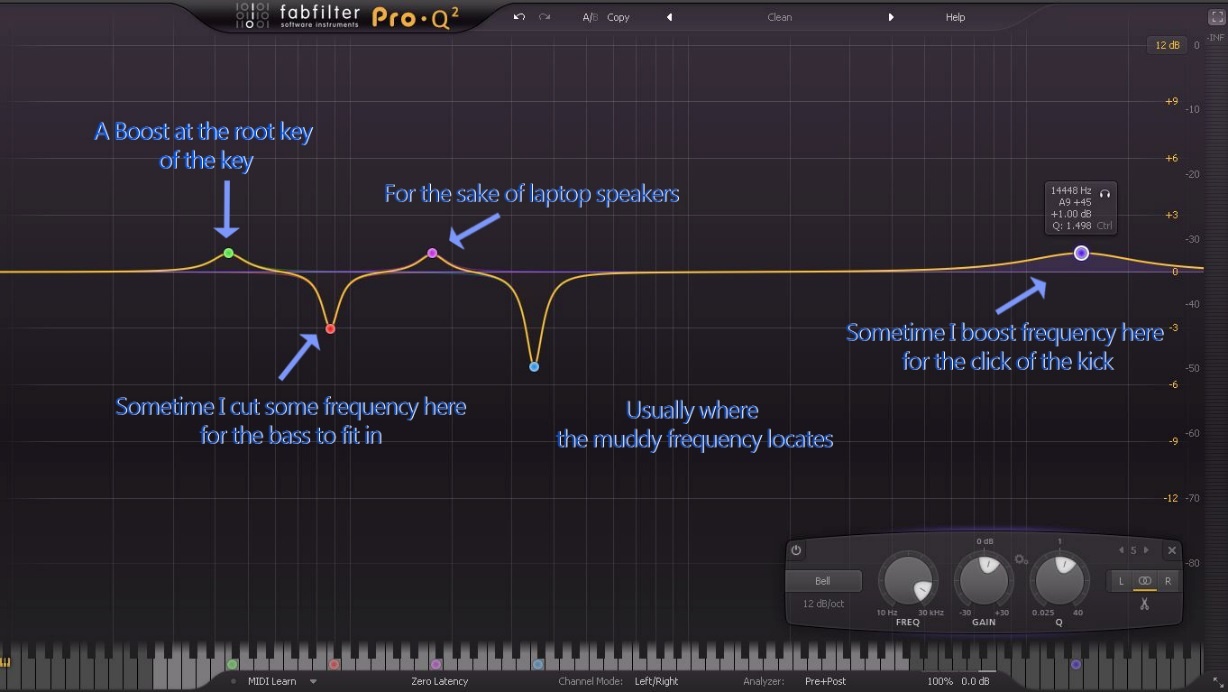
Eq Chart For Drums
1. The 808 Kick Drum 👑 EQ'ing Tips for 808s 2. The "Boomy" Techno Kick Drum 🔊 3. The "Punchy" Drum and Bass Kick Drum 🥊 4. The "Clicky" Psytrance Kick Drum 🎧 5. The "Muffled" Dub Techno Kick Drum 🎛️ Go Deeper: 3 More Tips to Bring Your Kicks to The Next Level 🚀 1. The iPhone Generation

vocal eq chart frequency areas Music mixing, Music recording studio
What is Kick Drum EQ? EQ is an abbreviation of 'equalization', and this is the act of cutting/boosting certain bands of frequencies to enhance the sound of a track. This comes in many forms including hardware/outboard studio gear and more familiarly with you, as a digital plug-in in your DAW. There are two main reasons why we should use EQ;

Bass Drum Frequency Range
1. Infrasound (0-20 Hz) While this range is barely audible, it's essential to approach it with caution. Boost: Generally not advised as it can introduce phase issues or muddiness. Cut: Useful for reducing any unwanted subsonic noise or rumble that might muddy your mix. 2. Sub Bass (20-60 Hz) The domain where the core power of the kick resides.

Bass music, Music mixing, Music tutorials
1. Kick drum (acoustic) Low-end punch: 60-80 Hz Added knock: 100-200 Hz Boxiness: 200-500 Hz Attack and click: 1-5 kHz. To bring out the low-end punch and definition of a kick drum, start by boosting the frequencies in the range of 60-80 Hz. This will enhance the fundamental low-frequency impact.
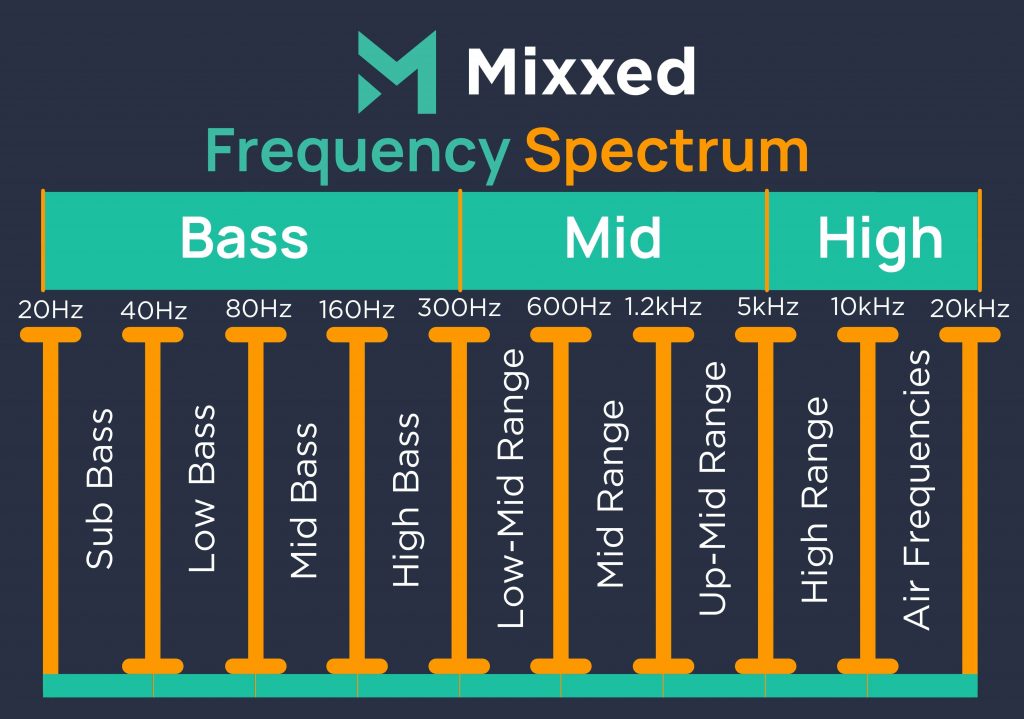
How to Make A Punchy Kick Drum That Cuts Through the Mix RouteNote
The kick drum (especially the sought-after 808) usually has a dominant frequency around 60Hz for that sub-bass feel. However, it also has a 'click' or 'snap' often around the 2kHz-4kHz range. This helps it cut through in dense mixes.
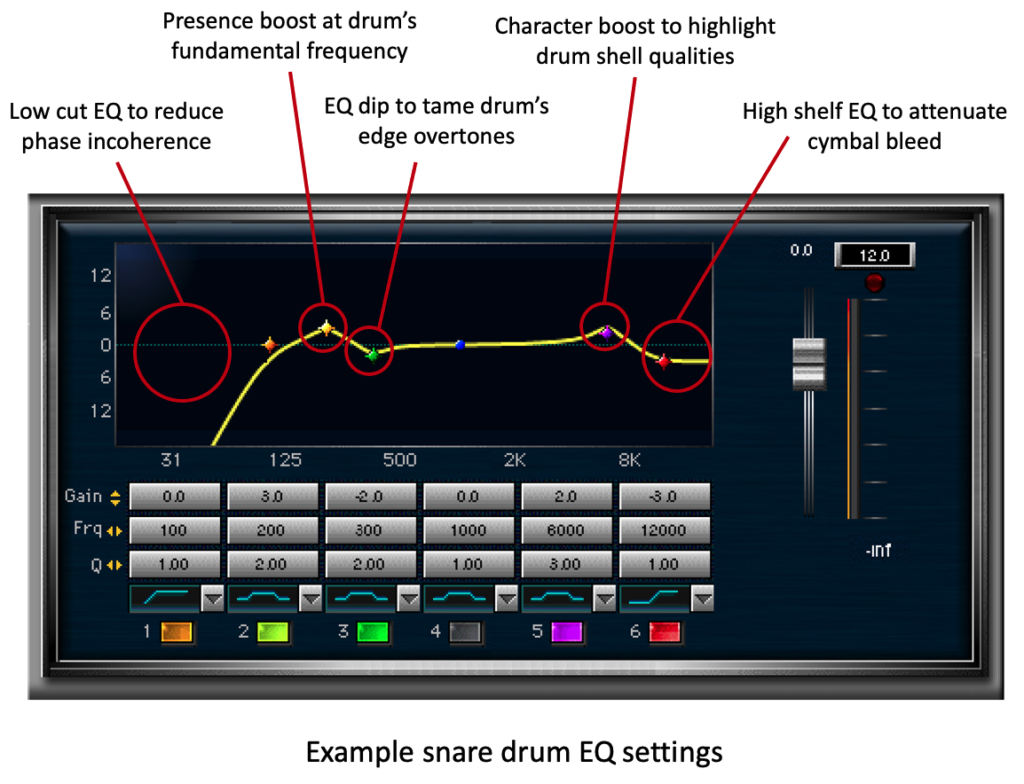
Guide To Mixing Drums Know Your Drum Frequencies iDrumTune
20.6 Hz 20 - 40 kick and bass are, can easily (More felt than heard, requires an enormous amount of energy, get cluttered and woofy sounding. This is where the thump comes from) & Hi quality transducers) (warmth, or a muddy, woody sound. fundamental for snare, toms, guitars, male vox) (this range has lots of upper resonance & droning.

The Ultimate Kick Drum EQ Beginner's Guide (With Steps)
1.3K 30K views 1 year ago The SonicScoop Podcast | Music Production, Audio Engineering, and the Art & Business of Sound Kick drum and bass are two of the most important elements in any mix. If.

This is a frequency chart for Kick Drum, Snare, Hi Hats, Cymbals, Bass
We know that kick drums have a fundamental frequency of around 50 or 60 Hz, so it makes sense to remove frequencies below about 50 Hz, since this content can only be low-level rumble and low-level reverberation in the room.

How to EQ Drums
Kick drum EQ is a balancing act between cutting out unnecessary frequencies to gain clarity and boosting frequencies that make the kick drum punch through the mix. You want to take the best elements of your sound and enhance them, bringing out the punch, bottom end, and attack, which are all essential characteristics of a good kick drum sound.
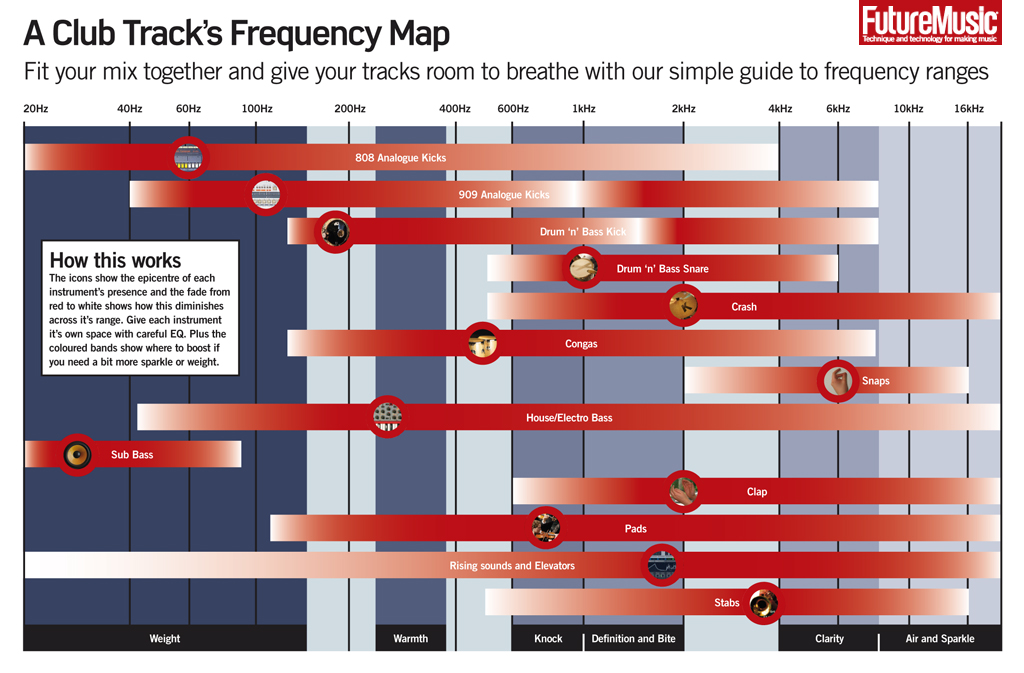
DJ Rubato [MIDI] A Club Track's Frequency Map Future Music
You need to be careful here as kick drum sounds carry a lot of low frequency energy, so you might want to reduce the overall volume of your channel to avoid clipping. Thar She Blows! Once you've identified the frequency with the most energy, dial back the gain and listen to the kick drum in the context of your mix. Start off from a 0dB gain.
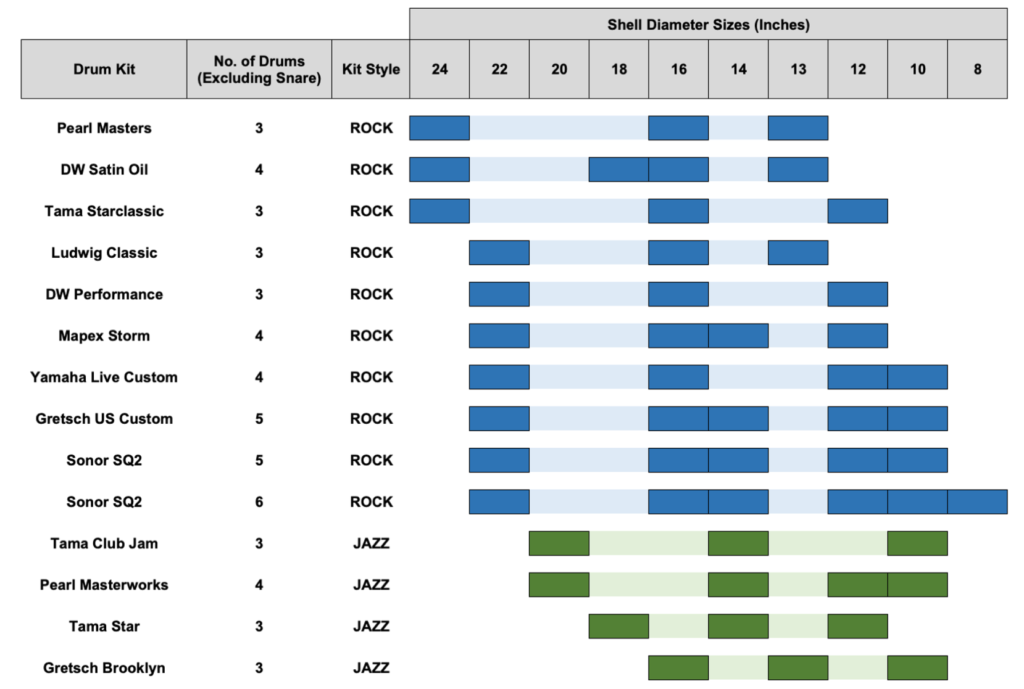
10. Tuning Drums for Different Styles and Genres iDrumtune
This means the typical kick should sit somewhere around 40-80 Hz on the low end and 80-120Hz on the high end. As far as EQ settings go, try boosting up to +6dB or -3dB depending on what kind of tone you want. Gain control also plays an important part when setting up kicks because it helps manage overall levels without affecting tonality too much.
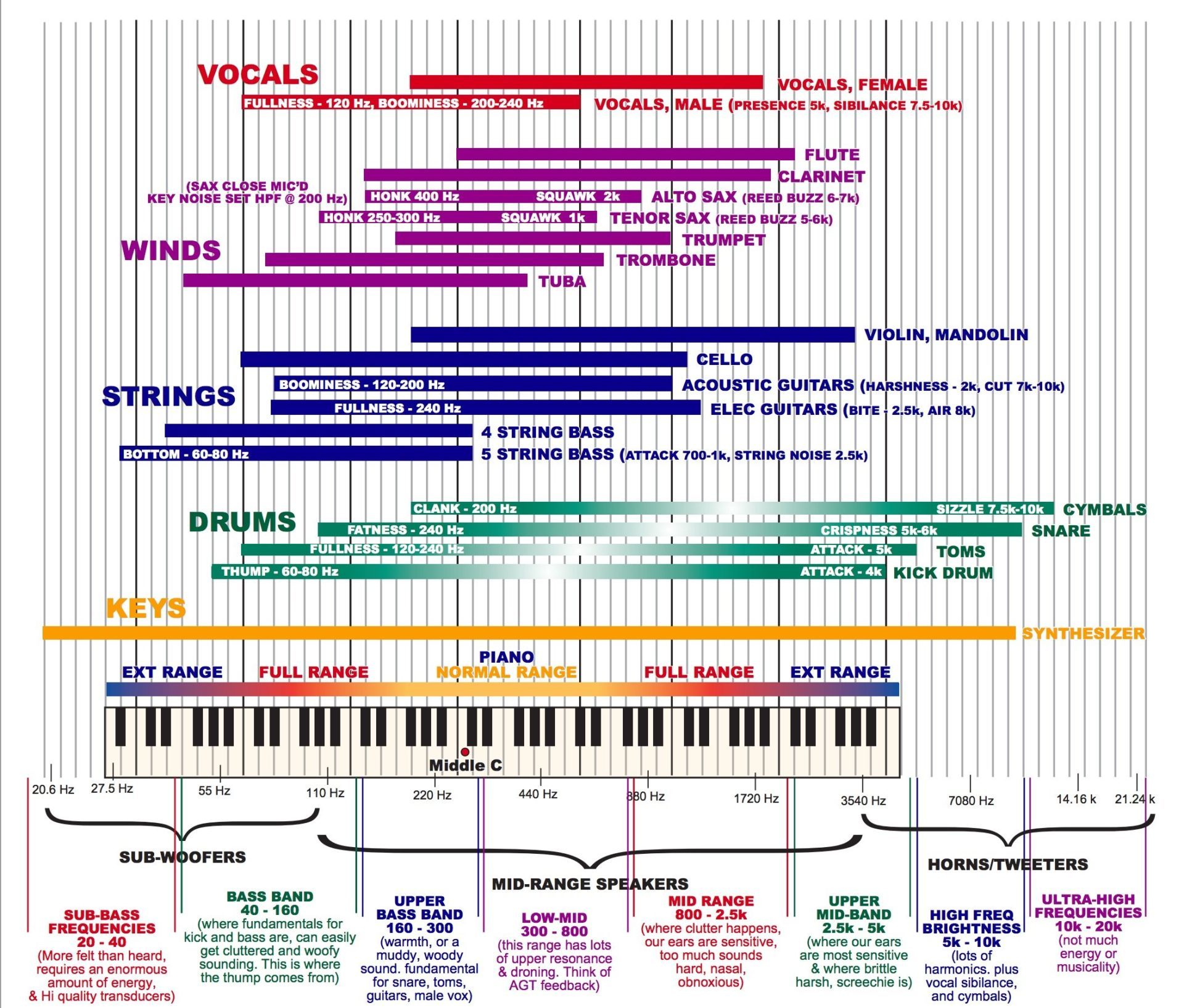
What Are the Frequencies on an Equalizer? (The Easy Approach Guide)
All you need to do is to use an HPF (high pass filter) at around 20Hz to 31Hz. You can go higher whenever necessary but just make sure that you're not causing the kick to sound thin (unless if it's the sound that you're going for). On live-recorded drum tracks, this is a good practice.

Magic frequencies to equalize a kick drum (bass drum) YouTube
This is where the bottom or "chest punch" of the bass and kick drum lies. Boost 2-3 dB within 60-90 Hz range with a low Q setting if more energy is needed, but don't overdo it. BOOM / WARMTH / MUD 100-450 Hz Boost 100-170 Hz range for more punch. Boost 130-220 Hz to add warmth and fullness. Check 250-450 Hz range for mud, boost to bring.